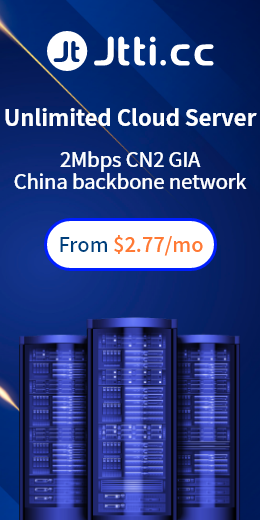The core considerations for enterprise IT transformation can start with differences in overseas data center costs and cloud computing economics. In the face of digital transformation, enterprises need to decide whether building their own data center or cloud computing is more cost-effective. Due to differences in geographical distribution, resource endowment and policy environment, overseas data centers have formed a complex competitive and complementary relationship with cloud computing. The following is a comparison of the economic differences between the two from the perspective of cost structure, performance advantages, compliance risks and future trends, hoping to have certain reference significance for everyone's decision-making.
Data center costs face the triple challenge of hardware, power and operation and maintenance
The cost structure of self-built or leased overseas data centers is complex, mainly including hardware procurement, power consumption, space leasing and operation and maintenance manpower. Taking hardware as an example, the procurement cost of servers and storage equipment usually accounts for 40% and 50% of the overall investment, and with the acceleration of technology iteration, the depreciation cycle of equipment is shortened to 35 years, further pushing up long-term expenditure. Power costs are another key factor: 45 percent of the average data center energy consumption is for IT equipment, 35 percent is for cooling systems, and the rest is for lighting and backup power. For example, due to the high cost of electricity (about $0.15 / KWH), the operating cost of data centers in Singapore is significantly higher than that of the United States ($0.07 / KWH).
Operation and maintenance costs vary greatly due to regional manpower differences. Technical teams in Europe and the United States have higher salaries, and the annual operation and maintenance cost of a single stand can reach $5,000, while Southeast Asian countries (such as Malaysia and Indonesia) reduce labor dependence through automated tools, and the cost can be compressed to less than $3,000. In addition, compliance costs cannot be ignored: the European Union's General Data Protection Regulation (GDPR) requires data to be stored locally, and companies that choose to build their own data centers in Germany or the Netherlands must bear an additional 20% or 30% compliance audit and security reinforcement costs.

The economics of cloud computing: the double advantage of scale and elastic resources
Cloud computing significantly reduces fixed costs for businesses through shared infrastructure and pay-as-you-go models. In the case of AWS, the hourly billing model of its EC2 instances allows enterprises to pay only for the compute resources they actually use, avoiding the waste of idle hardware. In contrast to self-built data centers, cloud computing can transform up-front capital expenditure (CapEx) into flexible operational expenditure (OpEx), which is especially suitable for smes and startups.
Economies of scale are at the heart of the cost advantage of cloud computing. By centralizing hardware procurement, optimizing energy efficiency (PUE values as low as 1.1), and automating operations, global cloud providers can reduce single-server operating costs to 60 percent of the cost of building their own data centers. Taking power management as an example, Google Cloud improves data center energy efficiency by 30% through AI-driven cooling systems, while traditional data centers rely on manual tuning and have limited room for efficiency improvement.
Flexible resource allocation further highlights the economics of cloud computing. Enterprises can dynamically expand resources according to business peaks, for example, temporarily add 100 virtual servers during the e-commerce promotion period, and release them immediately after the end of the activity to avoid long-term storage of redundant hardware. In contrast, self-built data centers need to reserve 20% of the redundant capacity to cope with sudden demand, resulting in long-term resource utilization below 50%.
Regional variation and compliance risk: a typical analysis of the Southeast Asian market
As an emerging digital market, Southeast Asia embodies the competitive situation between data centers and cloud computing. Only 28% of enterprises in the region are on the cloud (compared to 65% in China), but the region is experiencing a $60 billion infrastructure investment boom.
However, data sovereignty regulations add to the complexity of choice. Indonesia requires financial and government data to be stored locally, forcing companies to use a mix of self-built data centers (for compliance) and public clouds (for performance optimization). Microsoft's localized cloud platform, built in partnership with Telkom Indonesia, is designed to comply with regulations and provide flexible computing power through a "data does not leave the country" design. In addition, network latency varies significantly across Southeast Asia: Singapore nodes cover neighboring countries with an average latency of 50 milliseconds, while users in the Philippines can access local data centers with latency as low as 20 milliseconds, which is critical for real-time demanding services such as online payments.
Decision framework: the three-dimensional balance of cost, performance and strategy
Whether an enterprise should choose cloud computing or build its own data center should be evaluated from the following points:
1. Cost sensitivity: short-term projects or volatile businesses prefer cloud services; Long-term stable loads (such as database cores) can be considered to build or host data centers.
2. Performance requirements: High concurrency, low latency scenarios (such as games, real-time transactions) need to be close to the geographical node of the user, and the hybrid architecture can take into account the cost and experience.
3. Compliance and strategy: Industries with high data sovereignty requirements (e.g., finance, healthcare) need to balance localization investments with cloud service flexibility and adopt "sovereign cloud" or hybrid deployments.
The choice of overseas data centers and cloud computing is actually a dispute over the technical route of resource centralization and decentralization. Cloud computing supports resiliency and innovation, data centers are secure and controllable, and the two will move toward deeper integration in the future, and enterprises can dynamically evaluate technology evolution and market changes, and strive to seize the opportunity in cost and competitiveness.

 EN
EN
 CN
CN









